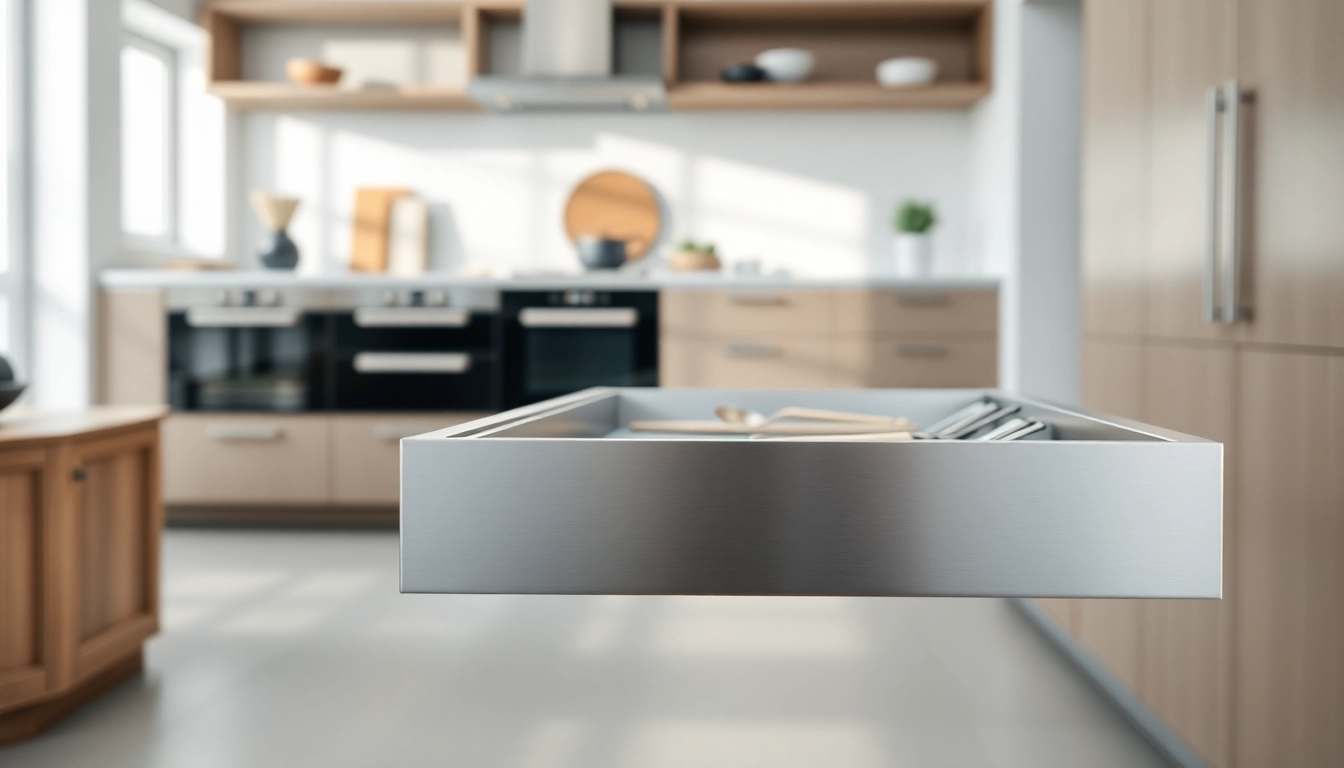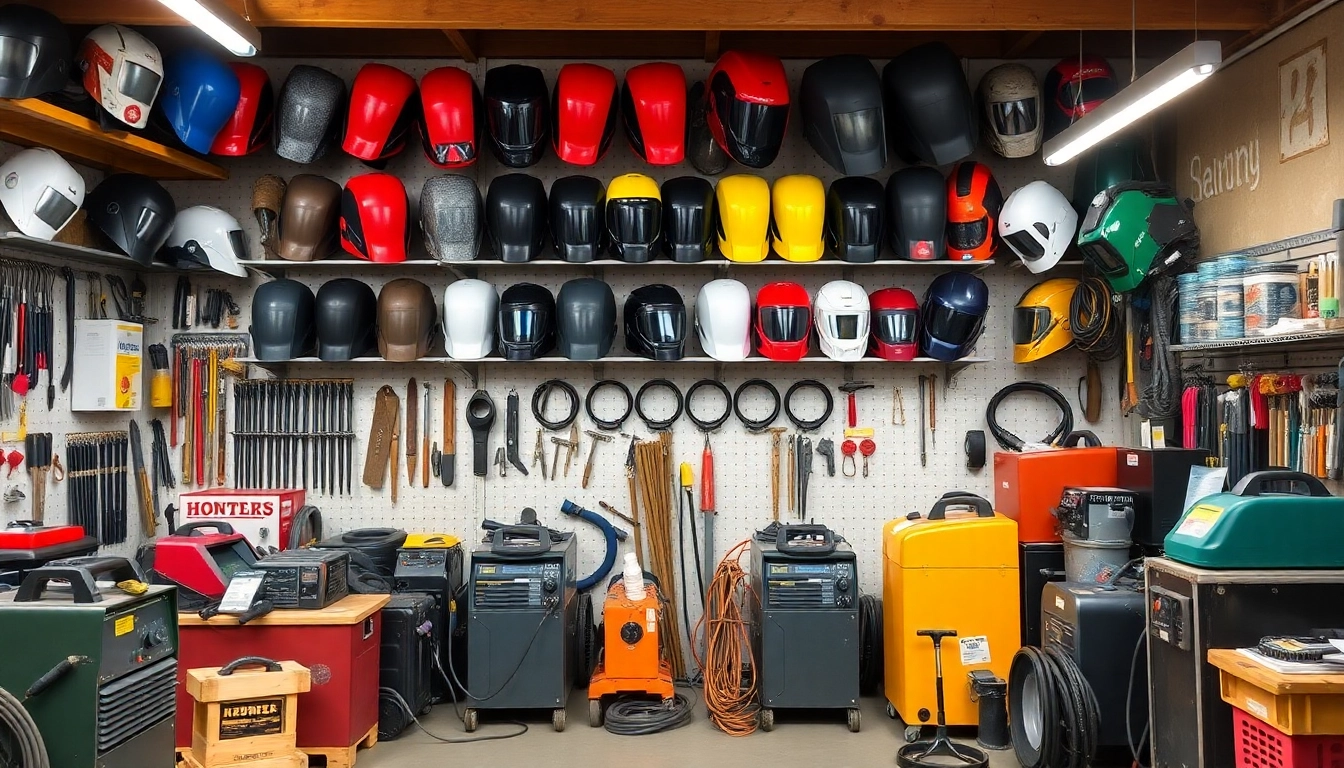Understanding Metal Drawer Systems
When it comes to modern cabinetry and furniture design, the Metal Drawer System has emerged as a game-changer. Thanks to their versatility, durability, and aesthetic appeal, metal drawer systems are gaining traction in both residential and commercial settings. This comprehensive guide explores all facets of metal drawer systems, from their construction and benefits to installation and maintenance practices, ensuring that you have a holistic understanding of these remarkable storage solutions.
What is a Metal Drawer System?
A metal drawer system consists of drawers constructed primarily from metal materials, often utilizing high-quality steel or aluminum. Unlike traditional wooden drawers, metal drawer systems provide a more robust structure, allowing for heavier loads without compromising durability or functionality. They often incorporate sophisticated sliding mechanisms, such as ball bearing or soft-close features, which enhance user experience by offering smooth and quiet operations.
Benefits of Using Metal Drawer Systems
Choosing a metal drawer system comes with numerous advantages:
- Durability: Metal drawers are resistant to wear and tear, making them ideal for high-traffic environments.
- Weight Capacity: Metal systems typically support greater weight loads compared to wood, allowing for the storage of heavy items without the risk of bending or breaking.
- Easy Maintenance: Cleaning metal drawers is usually a breeze; they can be wiped down easily, resisting stains and marks that wood might show.
- Modern Aesthetic: Metal systems lend a contemporary look to cabinetry, suitable for both modern and industrial designs.
- Customization Options: Many manufacturers provide an array of color finishes and shapes, catering to diverse design needs.
Common Applications for Metal Drawer Systems
Metal drawer systems can be found in various settings, including:
- Kitchen Cabinets: Their sturdiness is ideal for kitchen storage, handling utensils, pots, and pans.
- Office Furniture: Metal drawer systems efficiently store files, office supplies, and electronics.
- Retail Displays: Many retail outlets opt for metal drawers to showcase products due to their sleek and professional appearance.
- Workbench Organization: Metal drawers are commonly used in garages and workshops for tools and equipment storage, providing quick access and enhanced organization.
Features of Quality Metal Drawer Systems
Material and Construction Quality
When purchasing a metal drawer system, the choice of material and construction is paramount. Opt for systems made from high-gauge steel, as they possess superior strength and resistance to dents. Furthermore, look for powder-coated finishes that not only enhance appearance but also offer protection from rust and corrosion.
Sliding Mechanisms and Performance
The sliding mechanisms in metal drawer systems significantly contribute to their functionality. Look for features like:
- Full-extension Slides: This allows the drawer to extend completely, providing easy access to all contents.
- Ball Bearing Slides: These provide a smooth gliding action, essential for heavy drawers.
- Soft-Close Mechanisms: Offering an added layer of convenience, these systems prevent drawers from slamming shut and contributing to wear.
Design Options and Customization
Metal drawer systems boast various design options, allowing homeowners to personalize their storage. Manufacturers often provide an array of finishes, such as matte, gloss, or textured options, along with the ability to incorporate dividers and organizers to enhance functionality. Furthermore, custom sizes can be created to fit specific cabinetry dimensions or unique design inspirations.
Installation Guide for Metal Drawer Systems
Essential Tools and Materials
Installing a metal drawer system typically requires the following tools and materials:
- Drill and drill bits
- Screwdriver (usually a Philips and flat head)
- Level
- Tape measure
- Pencil for marking
- Metal drawer unit
- Mounting hardware (usually included with the drawer system)
Step-by-Step Installation Process
Installing a metal drawer system can be straightforward with proper preparation:
- Measure the Space: Take accurate measurements of the cabinet where the drawer will be installed.
- Mark the Guidelines: Use a level to draw horizontal lines where the brackets will be installed.
- Install Mounting Brackets: Secure the brackets to the sides of the cabinet using a drill and screws.
- Attach the Drawer Slides: Depending on the design, hook the slides onto the installed brackets following the manufacturer’s instructions.
- Install the Drawer: Slide the drawer onto the brackets, adjusting as necessary to ensure it’s level and operates smoothly.
- Test the Drawer: Open and close the drawer several times, checking for alignment and functionality before finalizing the installation.
Tips for Ensuring a Secure Fit
To ensure a secure and functional fit:
- Always read the installation instructions thoroughly before starting.
- Double-check measurements before drilling to avoid mistakes.
- Make sure the slides are level, as uneven installation can lead to difficulties in operation.
Maintenance and Care for Metal Drawer Systems
Cleaning and Upkeep Best Practices
Maintaining the appearance and functionality of your metal drawer systems requires some care. Regularly check for debris and clean surfaces with a soft cloth and mild detergent to avoid scratches. Lubricate sliding mechanisms with silicone spray to maintain smooth operation without attracting dust and dirt.
Troubleshooting Common Issues
If you encounter problems during use, consider the following common issues:
- Drawer Sticking: This may occur due to misalignment; adjust mounting brackets or slides as needed.
- Noise During Operation: A lack of lubrication or debris can cause noise; ensure that slides are clean and lubricated.
- Drawer Won’t Open or Close Properly: Check for obstructions or that the mounting hardware is secure.
Extending the Lifespan of Your Drawer System
To extend the lifespan of your metal drawer systems:
- Avoid overloading drawers beyond their weight capacity, as this can lead to bending or breaking.
- Regularly inspect the hardware, tightening screws and bolts that may become loose over time.
- Consider using drawer organizers to minimize clutter, reducing wear on sliding mechanisms.
Comparing Metal Drawer Systems to Other Options
Metal vs. Wooden Drawer Systems
When comparing metal and wooden drawer systems, consider the differences:
- Durability: Metal systems are typically more durable and resistant to damage than wooden alternatives.
- Maintenance: Metal requires less tedious maintenance as it does not warp or swell like wood.
- Cost: Often, high-quality wood systems may be more expensive compared to metal systems due to the cost of materials.
Analyzing Cost and Value
The initial cost of metal drawer systems can vary widely, often influenced by design, finish, and manufacturer. Despite a potentially higher upfront cost, the longevity and reduced maintenance expenses may yield long-term savings. When evaluating value, consider the intended use and anticipated wear; heavy-duty metal systems may justify the expense if put to frequent use.
Which Drawer System Fits Your Needs?
Choosing between metal and other material systems ultimately boils down to individual needs and preferences. Assess aspects such as functionality, frequency of use, design requirements, and budget constraints. For those prioritizing durability and low maintenance, metal drawer systems are an exceptionally sound choice.



